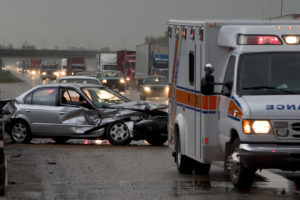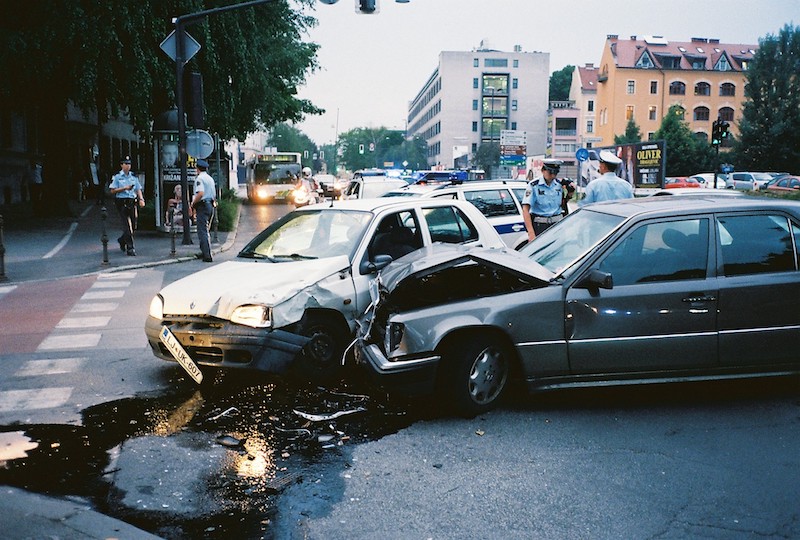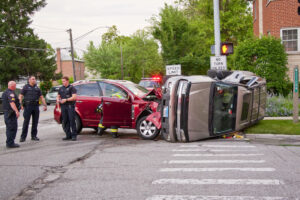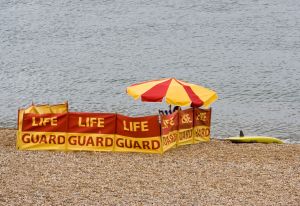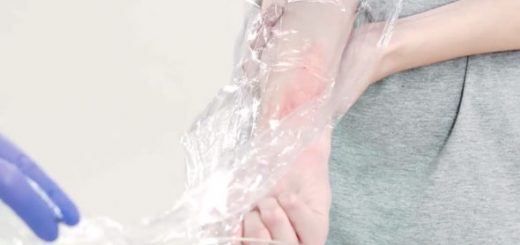8 Types of Car Accidents: Everything You Need to Know
Car accidents are, unfortunately, a leading cause of both non-fatal and fatal road traffic injuries. According to the WHO, between 20 and 50 million people suffer non-fatal injuries, while around 1.3 million people have their lives cut short due to road crashes each year.
While no two auto accidents are alike, car accidents can be categorized into numerous types. These categories can help you understand the types of injuries one can sustain, the severity of these injuries, and who the liability falls on.
So, read on as we guide you through some of the most common types of car accidents.
8 Types of Car Accidents
There are no universal criteria for car accident classification. Still, certain patterns place different car crashes into several categories. So, here are eight types of car accidents and their patterns to help you avoid one:
1. Single-Car Accident
A single-car accident is one where only one vehicle sustains damage. It most commonly occurs when a driver swerves to avoid road debris, an animal, or another car.
This type of car accident can happen for a variety of reasons. However, it often occurs due to distracted driving, fatigue, intoxication, or brake failure, or the driver may run off the road while trying to avoid the hazard in their path.
A driver can also get into a single-car accident due to another driver’s reckless driving.
In most single-vehicle crashes, the driver loses control of the car until it rolls over or collides with a stationary object. If the driver is lucky, the car will slam into a guardrail, a strong fence that will absorb the impact and deflect or slow the vehicle.
2. Multi-Car Accident
Multi-car accidents are collisions that involve three or more vehicles. They’re also known as chain-reaction or pileup collisions because three or more cars often cause a chain reaction in which multiple vehicles collide until they form a pile.
These accidents are often caused by one driver’s error. However, other drivers on the road don’t have enough time to react due to high speeds. That’s why this type of car accident is most common on highways and roadways with high-speed limits.
Weather conditions can also cause multi-car accidents, such as the pileup on Interstate 57 near Charleston in southeastern Missouri.
The consequences of multi-car accidents can range from minimal to catastrophic based on the number of cars involved. What’s more, vehicles that take multiple hits may cause severe injuries to their passengers.
3. Rear Impact
Rear impacts or rear-end collisions are one of the most, if not the most, common types of car accidents. They happen when one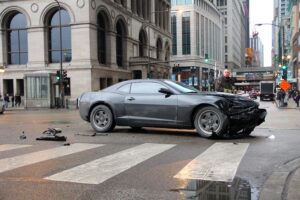
In most cases, rear-end collisions are caused by a driver who isn’t paying attention or is following too closely. That’s why the rear driver is likely to be found at fault.
Rear-end accidents can also happen due to low-traction road conditions caused by weather, such as rain or snow. These accidents happen more frequently during inclement weather in areas that do not normally see icy or snowy conditions.
Injuries from rear impacts range from minor to severe, with whiplash being the most common. The violent thrust forward due to impact can also result in fractures as well as long-term damage to the neck and spine. Because of the danger to the head, neck and spine, drivers that have been in a rear end collision are at higher risk for spinal cord injuries and traumatic brain injuries.
4. Frontal Impact
Frontal impacts, also known as head-on collisions, happen when the front ends of two vehicles collide. They’re less common than other types of car accidents. However, when they happen, they’re always sudden and likely unavoidable.
In addition, the force of the impact is equal to the sum of the two vehicles’ speeds. As a result, frontal impacts often result in severe injuries or fatalities.
Common causes of frontal impacts include:
- Distracted driving
- Driving in the wrong direction
- Speeding and reckless driving
- Driving while impaired or under the influence
In such an accident, wearing the seat belt and having the airbag activated can reduce the severity of the injuries and the likelihood of a fatality.
5. Lateral Impact
Lateral impacts are car accidents that happen when a vehicle crashes into the side of another vehicle. These accidents are also known as side-impact accidents, T-bone accidents, or broadside accidents.
Most lateral impacts are caused by distracted, impaired, or aggressive drivers who fail to yield or stop at crossroads. They can be one of the most dangerous car accidents. A T-bone accident occurs most commonly when a driver is making a turn across oncoming traffic.
Because there are only a few inches between the passenger and the door frame, there’s less mass to absorb impact. Some vehicle sides also lack safety features such as airbags.
As a result, a lateral impact can result in serious injuries. In fact, 18 percent of lateral impacts resulted in fatalities in 2020. Still, injuries can vary depending on which side of the vehicle is struck and whether passengers are present.
6. Rotational Impact
Rotational impacts happen when one of the vehicle’s corners collides with another vehicle or object. As a result, the corner comes to a halt and the rest of the vehicle spins until it slams into another object. These can be either single vehicle accidents or multi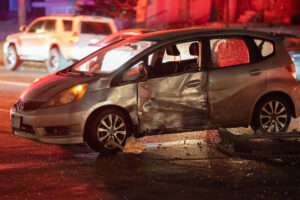
Like with most car accidents, distracted driving or impaired drivers often cause rotational impacts. Driving too close to the curb also increases the chances of colliding with a stationary object, such as a fire hydrant.
Most vehicles in these accidents are struck from the front and the sides. So, drivers and passengers may sustain a combination of the injuries seen in frontal and lateral impacts.
7. Sideswipe Impact
Sideswipe impacts, like lateral impacts, happen when a vehicle collides with the side of another vehicle. The difference is that the collision happens when the vehicles are parallel to each other, rather than perpendicular.
What’s more, the initial impact can cause one or both vehicles to collide with vehicles in other lanes, even causing a head on collision.
Sideswipe accidents are often caused by distracted, impaired, or even tired drivers. Drivers who switch lanes at high speeds may also cause sideswipe collisions. Those drivers often forget to check their blind spots while changing or merging into another lane.
Since these collisions can involve more than two cars, the injuries can be severe. So, the best way to avoid sideswipe impacts is to stay out of other drivers’ and your blind spots. You should also be cautious of vehicles that are driving too close to the lane divider.
8. Rollover Collision
A rollover collision happens when a vehicle flips on its side or roof. Similar to frontal impacts, rollover accidents are among the most devastating car accidents.
To begin with, a rollover accident can occur for a wide variety of reasons, including:
- Turning too quickly or sharply
- Lack of traction due to rain or snow
- Braking suddenly at a high-speed rate
What’s more, many cars lack safety measures that can offer protection in the event of a rollover. The driver and any passengers may get tossed around inside or ejected from the car, causing catastrophic injuries.
In addition, if fuel spilled from the car ignites after it rolls over, it can be fatal to the passengers and oncoming traffic.
In Conclusion
Now that you’re more familiar with some of the most common types of car accidents, you have a better understanding of what may cause a collision.
That way, in case of an accident, you may be able to reduce injuries and fatalities. Not to mention, determining the type of auto accident can help you obtain more information about your legal rights.
Having said that, remember to wear your seat belt and pay attention to the road for your own and others’ safety.
If you’d like to continue learning, please check out one of our free online First Aid Courses!

